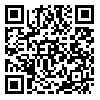BibTeX | RIS | EndNote | Medlars | ProCite | Reference Manager | RefWorks
Send citation to:
URL: http://rehabilitationj.uswr.ac.ir/article-1-1779-en.html

 , Mehdi Alizadeh Zarei *2
, Mehdi Alizadeh Zarei *2 
 , Malahat Akbar Fahimi1
, Malahat Akbar Fahimi1 
 , Samaneh Karamali Esmaeili1
, Samaneh Karamali Esmaeili1 

2- Department of Occupational Therapy, Faculty of Rehabilitation, Iran University of Medical Sciences, Tehran, Iran. ,
Objective Executive functions are referred to higher and self-tuning cognitive processes that help managing behaviors and thought controls. Executive functions in children are assessed in different ways. The most prestigious and valuable way is using daily functions reports on a child's natural environment. This study aimed to prepare the Persian version of behavior rating inventory of executive function-preschool (BRIFF-P) and study of its face and content validity among Iranian children. The questionnaire completed by parents of 2-5 years old children.
Materials & Methods This study has methodological and psychometric design. We studied the Persian version of tests using standard protocols IQOLA and determined its validity. This protocol includes translation, evaluation of translation quality, backward translation, and comparing the English version with its Persian one. Face validity was determined by 20 samples (parent) and the impact score was measured. Content validity index (CVI) and ratio of the content validity (CVR) was determined by asking the opinions of 15 experts. Moreover, the simplicity, relevance, and transparency of each item was evaluated.
Results Based on the simplicity and clarity of questionnaire items, over 80% agreement of the sample group indicated the simplicity and clarity of the items. also the difficult and complex items were discussed among experts in several sessions and as a result the simpler and clearer concepts took the place of difficult and ambiguous items. Then, the score of proportion index effect and relation of items for each of 63 items of questionnaire was calculated. the results showed that all items of questionnaire were simple and clear, also all items except 7 achieved impact score of higher than 1.5. To evaluate the content validity of the questionnaire, we used ratio of content validity and index calculation. Content validity showed that almost all items of the questionnaire achieved CVI score of higher than 0.79 (The lowest score was 0.8 and highest one was 1); however, as regards the index of relatedness, 3 items got scores lower than 0.79 The scores of the content validity ratio were more than 0.49, except the fifth item.
Conclusion The Persian version of this questionnaire possesses a good match in terms of cultural and face validity. The results of content validity confirms that the Persian version is clear, simple, and understandable for the target society. However, 7 items of the questionnaire got scores lower than 1.5. of course, as in this study, the parents of normal children were investigated, the importance of these items in evaluation of abnormal children must be considered, because in many abnormal growth development of children (like attention deficit/hyperactivity, autism) such behaviors are clearly considered problematic. Therefore, the importance of these items are seen in final questionnaire and in spite of low score of 1.5 of some items, in the sample group (normal children), these items were kept and inserted in the final questionnaire. The results of content validity were also indicative of different cultural assumptions from some items of this questionnaire. We suggest that in future studies, the content validity of the Persian version was estimted with regard to opinions of parents of abnormal children with growth development problems and then the results were compared. We also suggest examining the other kinds of reliability and validity of this test.
Received: 3/07/2015 | Accepted: 11/01/2016 | Published: 1/04/2016
| Rights and permissions | |
 |
This work is licensed under a Creative Commons Attribution-NonCommercial 4.0 International License. |




